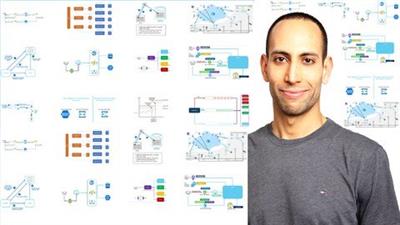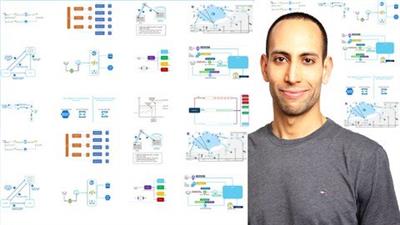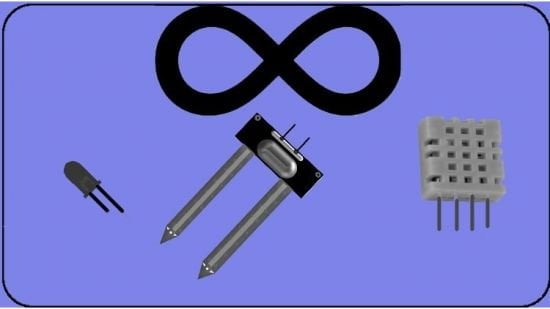
Genre: eLearning | MP4 | Video: h264, 1280×720 | Audio: AAC, 44.1 KHz
Language: English | Size: 1.05 GB | Duration: 5h 40m
Cloud Design Patterns for building reliable, reusable, secure applications in the Cloud
What you’ll learn
Azure Cloud Design Patterns
GateKeeper Pattern
Gateway Aggregation Pattern
Gateway Offloading Pattern
Gateway Routing Pattern
Priority Queue Pattern
Publisher-Subscriber Pattern
Queue-Based Load Leveling Pattern
Asynchronous Request-Reply Pattern
Bulkhead Pattern
Retry Pattern
Static Content Hosting Pattern
Claim-Check Pattern
Ambassador Pattern
Anti-corruption Layer Pattern
Strangler Fig Pattern
Backends-For-Frontends Pattern
Sidecar Pattern
Throttling Pattern
Valet Key Pattern
Federated Identity Pattern
Deployment Stamp Pattern
Geode Pattern
External Configuration Store Pattern
Choreography Pattern
Competing Consumers Pattern
Cache-Aside Pattern
Sequential Convoy Pattern
Compensating Transactions Pattern
Description
**Please read**
The course is ALL SLIDES-BASED: No hands-on will be done during this course. This is a complete course that explains how the Cloud Design Patterns in depth.
Each pattern describes the problem that the pattern addresses, considerations for applying the pattern, and an example based on Microsoft Azure. Most of the patterns include code samples or snippets that show how to implement the pattern on Azure. However, most of the patterns are relevant to any distributed system, whether hosted on Azure or on other cloud platforms.
Ambassador Pattern: Create helper services that send network requests on behalf of a consumer service or application.
Anti-Corruption Layer Pattern: Implement a façade or adapter layer between a modern application and a legacy system.
Asynchronous Request-Reply Pattern: Decouple backend processing from a frontend host, where backend processing needs to be asynchronous, but the frontend still needs a clear response.
Backends for Frontends Pattern: Create separate backend services to be consumed by specific frontend applications or interfaces.
Bulkhead Pattern: Isolate elements of an application into pools so that if one fails, the others will continue to function.
Cache-Aside Pattern: Load data on demand into a cache from a data store.
Choreography Pattern: Let each service decide when and how a business operation is processed, instead of depending on a central orchestrator.
Claim Check Pattern: Split a large message into a claim check and a payload to avoid overwhelming a message bus.
Compensating Transaction Pattern: Undo the work performed by a series of steps, which together define an eventually consistent operation.
Competing Consumers Pattern: Enable multiple concurrent consumers to process messages received on the same messaging channel.
Deployment Stamps Pattern: Deploy multiple independent copies of application components, including data stores.
External Configuration Store Pattern: Move configuration information out of the application deployment package to a centralized location.
Federated Identity Pattern: Delegate authentication to an external identity provider.
Gatekeeper Pattern: Protect applications and services by using a dedicated host instance that acts as a broker between clients and the application or service, validates and sanitizes requests, and passes requests and data between them.
Gateway Aggregation: Use a gateway to aggregate multiple individual requests into a single request.
Gateway Offloading Pattern: Offload shared or specialized service functionality to a gateway proxy.
Gateway Routing Pattern: Route requests to multiple services using a single endpoint.
Geodes Pattern: Deploy backend services into a set of geographical nodes, each of which can service any client request in any region.
Priority Queue Pattern: Prioritize requests sent to services so that requests with a higher priority are received and processed more quickly than those with a lower priority.
Publisher/Subscriber Pattern: Enable an application to announce events to multiple interested consumers asynchronously, without coupling the senders to the receivers.
Queue-Based Load Leveling Pattern: Use a queue that acts as a buffer between a task and a service that it invokes in order to smooth intermittent heavy loads.
Retry Pattern: Enable an application to handle anticipated, temporary failures when it tries to connect to a service or network resource by transparently retrying an operation that’s previously failed.
Sequential Convoy Pattern: Process a set of related messages in a defined order, without blocking processing of other groups of messages.
Sidecar Pattern: Deploy components of an application into a separate process or container to provide isolation and encapsulation.
Static Content Hosting Pattern: Deploy static content to a cloud-based storage service that can deliver them directly to the client.
Strangler Fig Pattern: Incrementally migrate a legacy system by gradually replacing specific pieces of functionality with new applications and services.
Throttling Pattern: Control the consumption of resources used by an instance of an application, an individual tenant, or an entire service.
Valet Key Pattern: Use a token or key that provides clients with restricted direct access to a specific resource or service.Data Management,Security
Who this course is for:
Cloud Architects
Software Architects
Cloud Software Engineers
Infrastructure Engineers
Security Engineers
Homepage
https://www.udemy.com/course/cloud-design-patterns/




